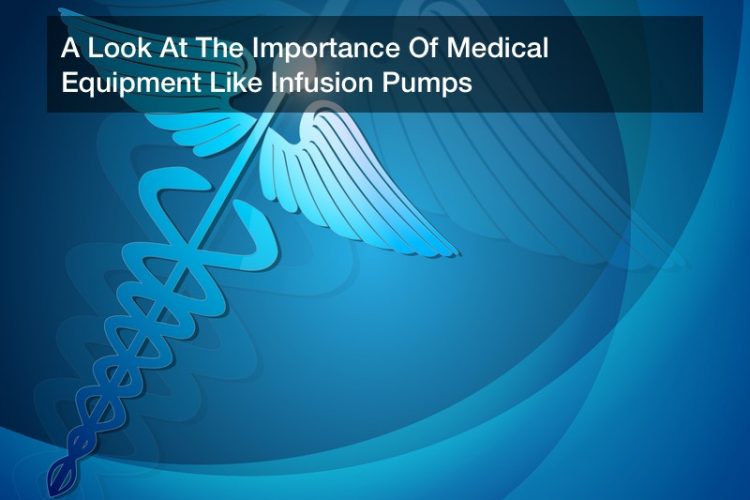
In hospitals all throughout the country, supplies of a high quality and effective, durable nature are hugely important indeed. In fact, so many different types of supplies are needed that just about any American hospitals will have at least 35,000 SKUs of equipment at any given time – and some might even have more, depending on a variety of factors (such as the level of the hospital as well as its size). And while supplies can be quite hugely expensive, renting supplies instead of buying them can save hospitals and other medical facilities a good deal of money indeed, of this there is very little doubt indeed.
Infusion pumps are a much needed example of the supplies that hospitals must acquire. After all, the vast majority of all patients who come to a hospital (any given hospital, for that matter) – up to 86% of them, to be just a bit more exact – will require an infusion pump of some kind. These IV pumps can serve many roles, meaning that IV infusion pumps are a must in any given medical setting, particularly that of the hospital one.
But what purpose of infusion pumps is the most important? Well, there’s not just one most important purpose of infusion pumps. The purpose of infusion pumps is greatly multifaceted and not to be underestimated. For example, the purpose of infusion pumps revolves around simple hydration. Many people come into emergency room locations dehydrated as a result of illness. Dehydration can all too easily become dangerous when not treated, even leading to death as the result of an illness that would otherwise be largely preventable. Fortunately, one purpose of infusion pumps is to provide a saline solution, which is actually the most common purpose of infusion pumps. This solution is critical to the health and well being of many and can even be used in a preventative way, such as for laboring mothers who might at some point need fluids over the course of the labor and delivery process.
The purpose of infusion pumps is, of course, even more varied. Another main purpose of infusion pumps is for the administration of intravenous medications. These medications can be best administered via an IV infusion system for a variety of reasons. For one thing, an unconscious patient will not be able to actively take medications but might still be in need of them. Putting them into an IV pump will help to administer them in a way that is safe and effective for any patient, conscious or not. In some cases, IV medications will take hold even more quickly than medications that are given orally. This is due to the fact that the bioavailability absorption rate is 100% when given through an IV. This is much greater than even when you take a medication by mouth, making quick treatment possible through the use of IV tubing and and infusion systems. In cases like the event of a stroke, where time is of the essence, this becomes a main purpose of infusion pumps.
And infusion pumps have come a long way since they were first developed. Back in the 1960s, infusion pumps first came onto the market. In the years that have transpired since, IV pump equipment has become all the more sophisticated. With the proper IV pump training given, medical professionals can use IV pump brands of all kinds to greater effect than ever before. And hopefully our IV pump equipment – and the overall purpose of infusion pumps – will only grow in the years that are ahead of us as well. Already, the use of IV pump equipment have saved the lives of many, through personal IV ownership or even through hospital equipment rentals. With a broader access to medical equipment like IV infusion pumps than ever before, more and more people are able to be accurately and successfully treated by these methods as well. Ultimately, they play a hugely important role in the lives of many – and will continue to do so in the years that are ahead of us as well, something that might become even more pronounced.
